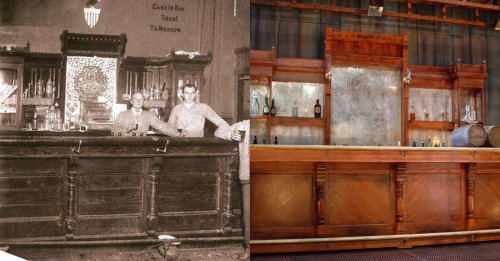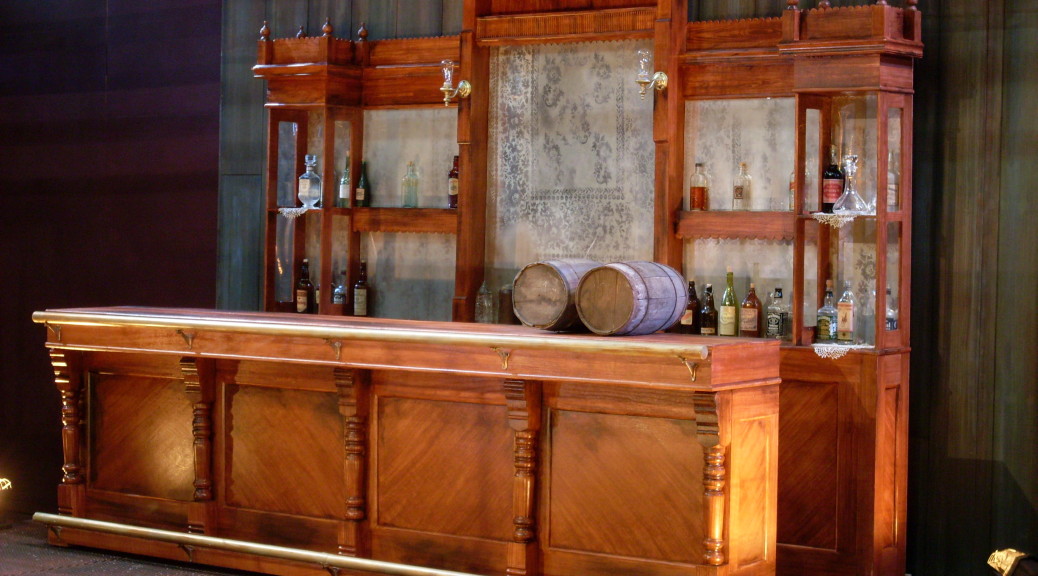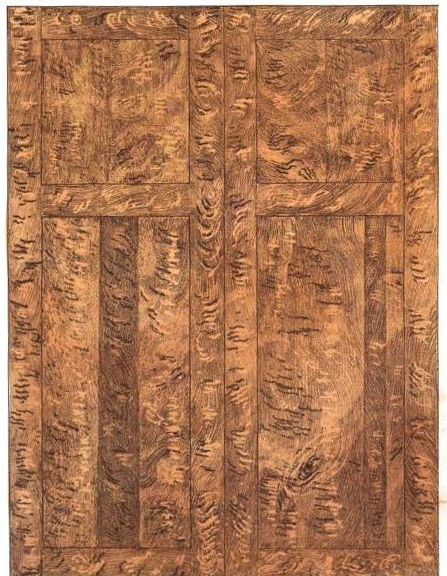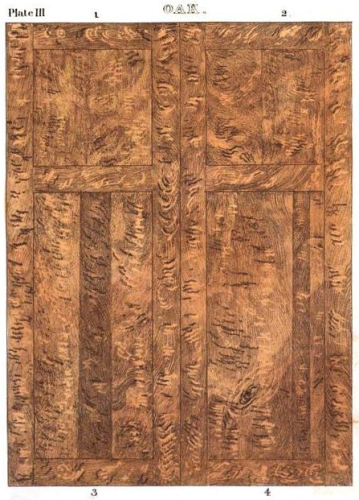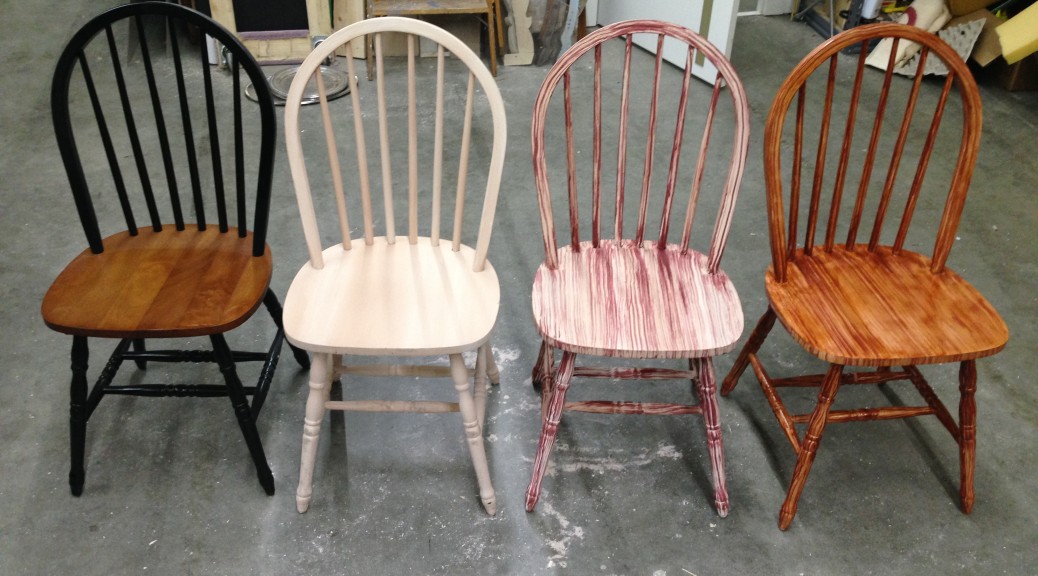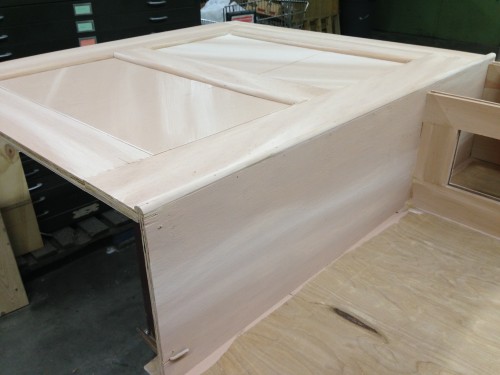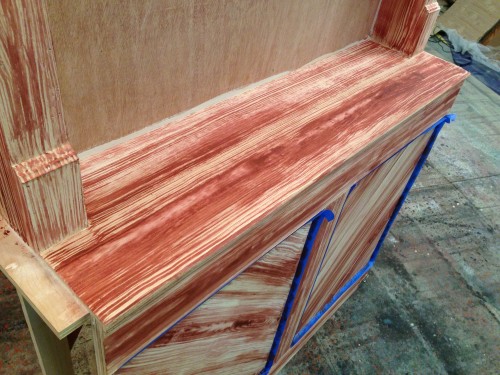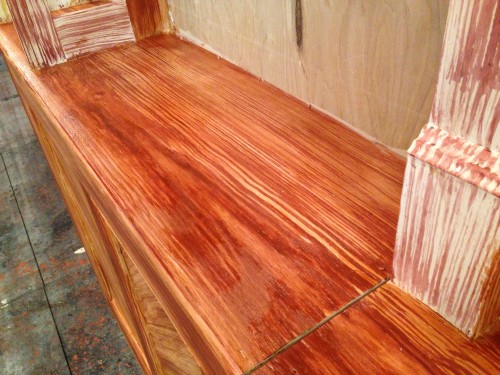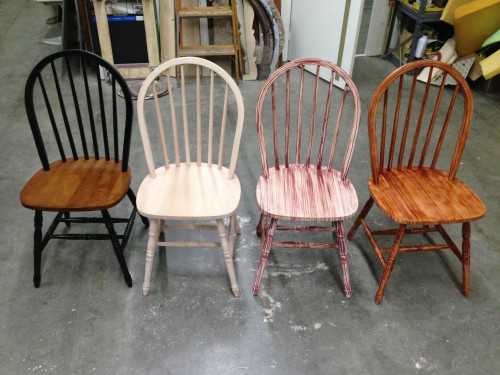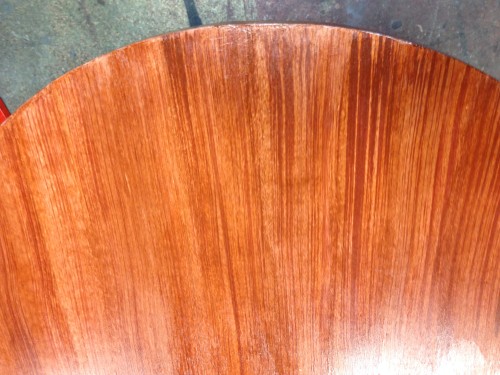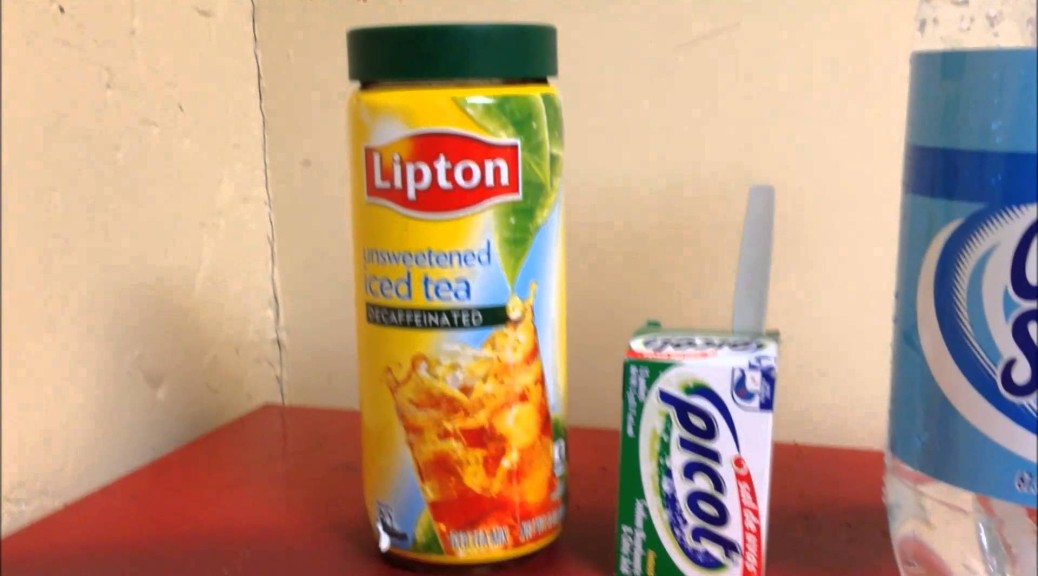The first scene of Anna Christie takes place in a small waterfront bar in the New York City harbor around 1910. For our production at Triad Stage, the design had a large back bar and front bar which could appear for that scene and strike backstage when it ended. The scenic designer drafted the front bar and the back bar for the props shop to build, and away we went. Standing nine and a half feet tall, at almost twelve feet long, the back bar really pushed the limits of the definition of a “prop”.
The back bar was built mostly out of lauan with half-inch plywood framing pieces to make it as light as possible, since it would need to be pushed on and off stage a vista by three crew members.
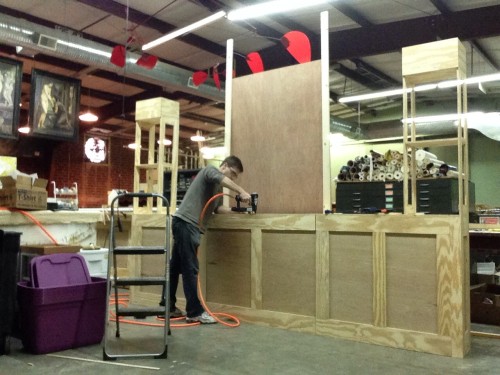
It was constructed in three sections to make transportation to the theatre possible. You can see two of the sections below, showing where the piece broke apart. You can also see the beginnings of the wood grain paint treatment which I wrote about last week.
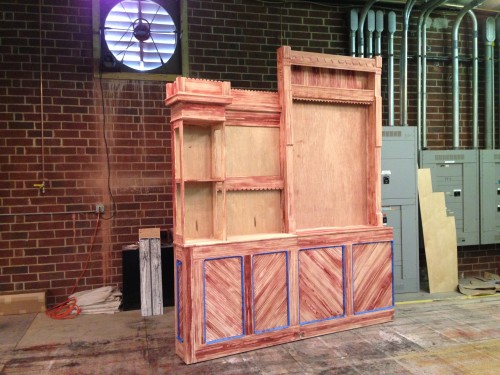
Most of the vertical surfaces on the top section of this piece were meant to be antique frosted mirrors. I used some silver Mylar as the mirror, laid a section of lace on top, and spray painted through it. This left a lace-like design on the Mylar, and after a few more coats of spray frosting over the whole thing, it looked just like a mirror.
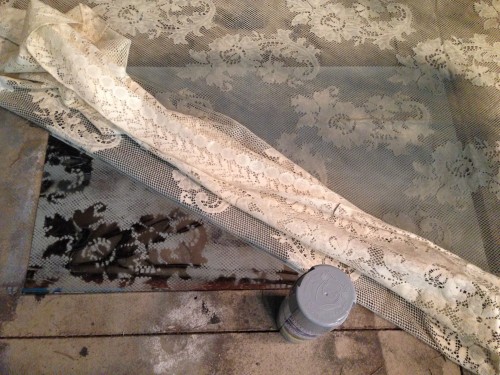
The unit was originally on wheels, but when it got to the theatre, the noise it made while moving was deafening. The stage floor consisted entirely of expanded steel panels. We discovered that plastic furniture gliders actually made moving the unit completely silent and fairly effortless. They also ensured the unit remained stationary when no one was touching it.
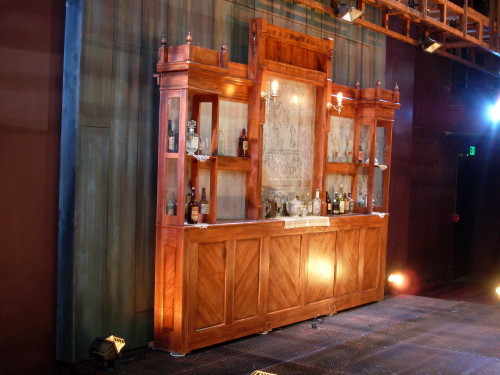
With some practical sconces, some lace runners and doilies, and a whole bunch of vintage liquor bottles, the piece was complete. Below is a photo of the whole setup, which includes the front bar that our prop shop also constructed.
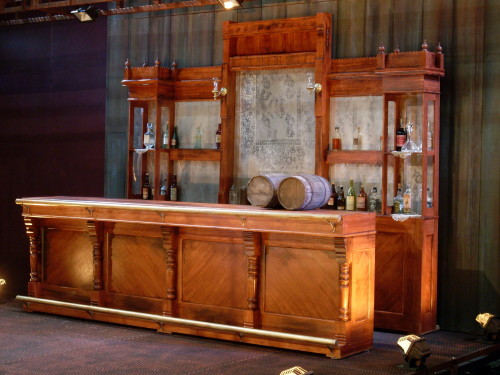
You can also see a side-by-side comparison of the final piece with a research image. Obviously the proportions and specifics were changed in the design, but the inspiration is fairly clear.
